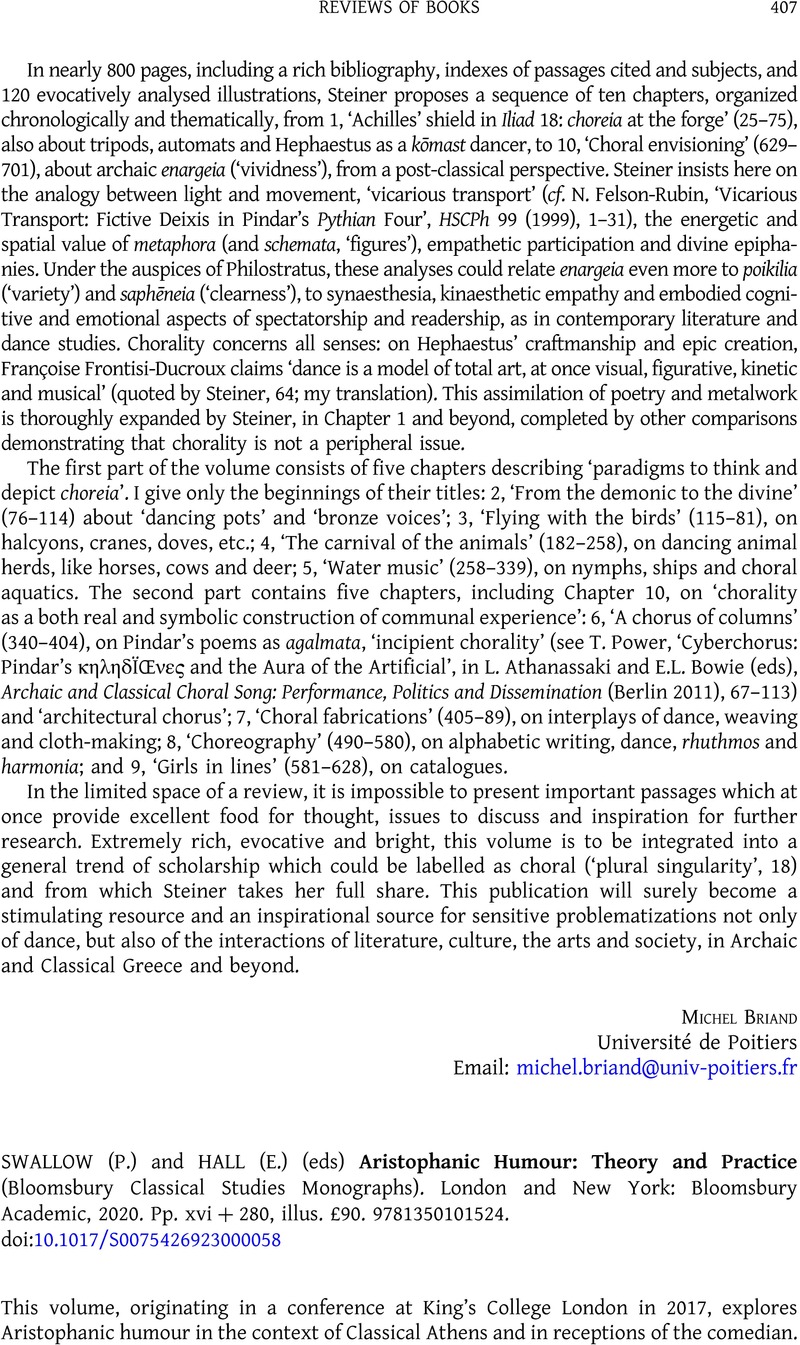No CrossRef data available.
Article contents
(P.) SWALLOW and (E.) HALL (eds) Aristophanic Humour: Theory and Practice (Bloomsbury Classical Studies Monographs). London and New York: Bloomsbury Academic, 2020. Pp. xvi + 280, illus. £90. 9781350101524.
Review products
(P.) SWALLOW and (E.) HALL (eds) Aristophanic Humour: Theory and Practice (Bloomsbury Classical Studies Monographs). London and New York: Bloomsbury Academic, 2020. Pp. xvi + 280, illus. £90. 9781350101524.
Part of:
Literature
Published online by Cambridge University Press: 28 April 2023
Abstract
An abstract is not available for this content so a preview has been provided. Please use the Get access link above for information on how to access this content.

- Type
- Reviews of Books
- Information
- Copyright
- © The Author(s), 2023. Published by Cambridge University Press on behalf of the Society for the Promotion of Hellenic Studies


